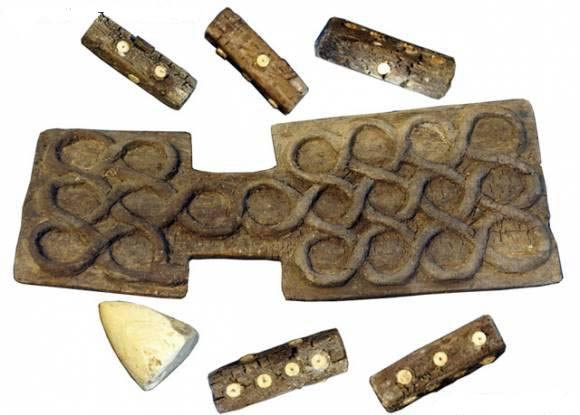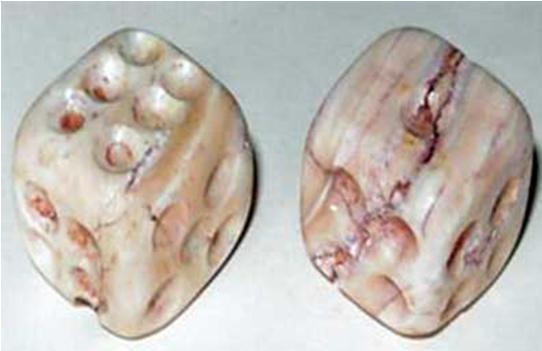One of ancient Iran’s most ancient sites is known as the Burnt City (located in eastern Iran – South of Zabol in region of Sistan-Baluchistan). The 4,400 year site of interest as it has yielded interesting finds such as the discovery of an artificial eye and ruling/measurement devices. As noted by Hasan Sargazi ( a leader of the 2004 excavations), an estimated 4 billion artifacts within the 55 hilltops had been dug up by 2004 alone, requiring at least 400 years for examination and tabulation.

The oldest sample of the backgammon game discovered at Shahr-e Sookhteh (Image Source: Touriar).
The excavations in Sistan-Baluchistan are far from finished. Rasoul Mousavi Haji, one of the leaders of the archeology team in the area in 2007 has clearly hinted to Iran’s Cultural Heritage News Agency that:
“Although discovery of a large number of prehistoric sites shed light into the importance of this area during very ancient times, we have also succeeded in identifying a number of historical sites dating back to the Parthian (248 BC-224 AD) and Seleucids (312-64 BC) dynastic eras for the first time in this area. A number of historical sites belonging to 12-15 centuries AD have been also identified in the region, which were never seen before…”
One of the most interesting discoveries at the site is a rectangular board constructed of ebony. This is interesting as ebony is not known to have been available in Seistan. This would strongly suggest that merchants would have imported this material from India.
The board itself has an engraved serpent design coiling twenty times around to produce twenty slots for the game. Note that sixty pieces were also unearthed inside a terracotta vessel next to board during the excavations. Interestingly the pieces themselves were built from common minerals and stones found in the region (i.e. turquoise, Agate).
Ancient dices discovered at the Burnt-City. At present experts are (a) attempting to determine why the game was played with sixty pieces and (b) working to decode the rules of the game. Iranians call Backgammon “Takht-e Nard”.
This raises the question as to how and why the inhabitants of the Burnt City had time for such leisurely games. What is almost certain is that the popularity of such games are suggestive of the Burnt City having been a highly advanced civilization.
The city has no connection to other ancient civilizations in Western Asia although its close proximity to the site of Mohenjo-Daro (in present-day Pakistan) is possible. What is certain is that the Burnt City is not connected to the Mesopotamian plain and is independent of her.





